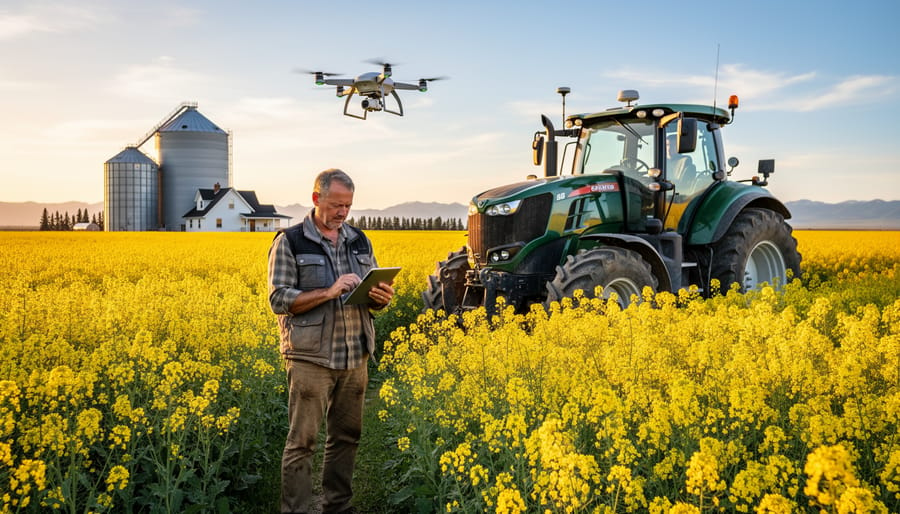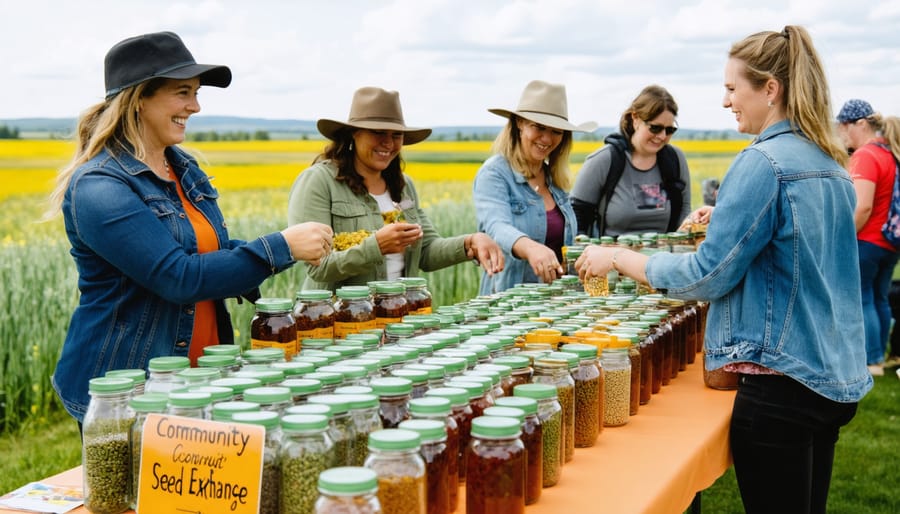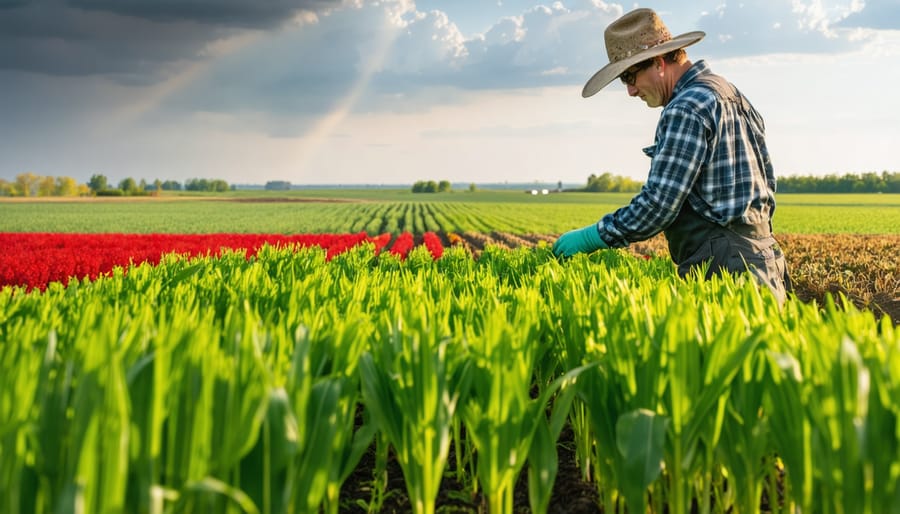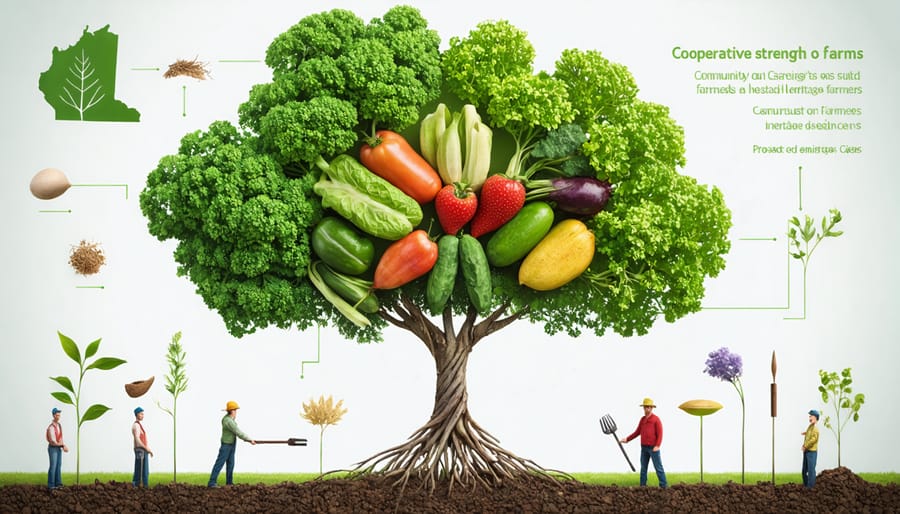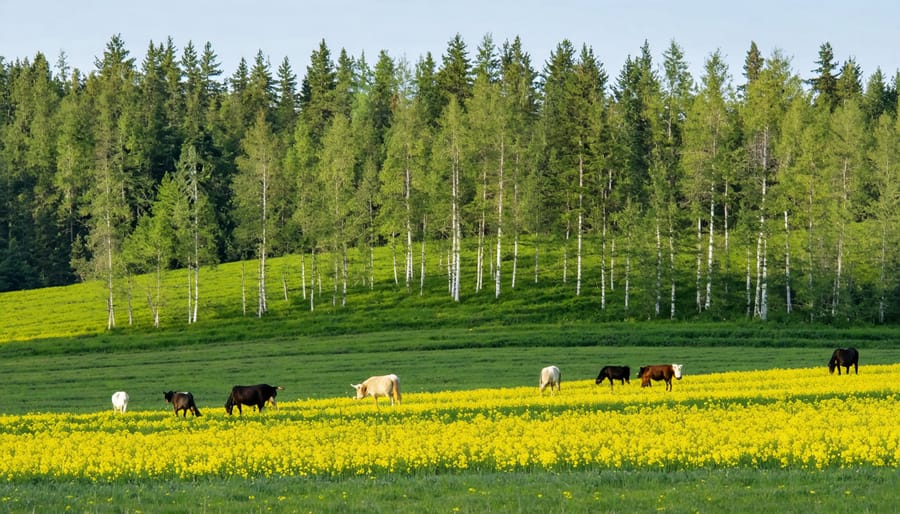Transform agricultural organizations through strategic rural-urban partnerships in organic farming by establishing clear governance structures, implementing data-driven decision-making processes, and fostering collaborative relationships between producers and consumers. Canadian farmers face unprecedented opportunities to scale their operations while maintaining sustainable practices, particularly in Alberta’s diverse agricultural landscape. Modern farming organizations require robust developmental frameworks that balance traditional agricultural wisdom with innovative management approaches. By integrating systematic organizational development principles with agricultural expertise, farms evolve from individual operations into resilient, community-centered enterprises capable of meeting growing market demands while preserving ecological integrity. Leading agricultural organizations across Alberta demonstrate that structured developmental approaches yield measurable improvements in operational efficiency, market access, and long-term sustainability. This practical framework for farming organizational development merges time-tested agricultural methods with contemporary business practices, creating a blueprint for success in today’s complex agricultural marketplace.
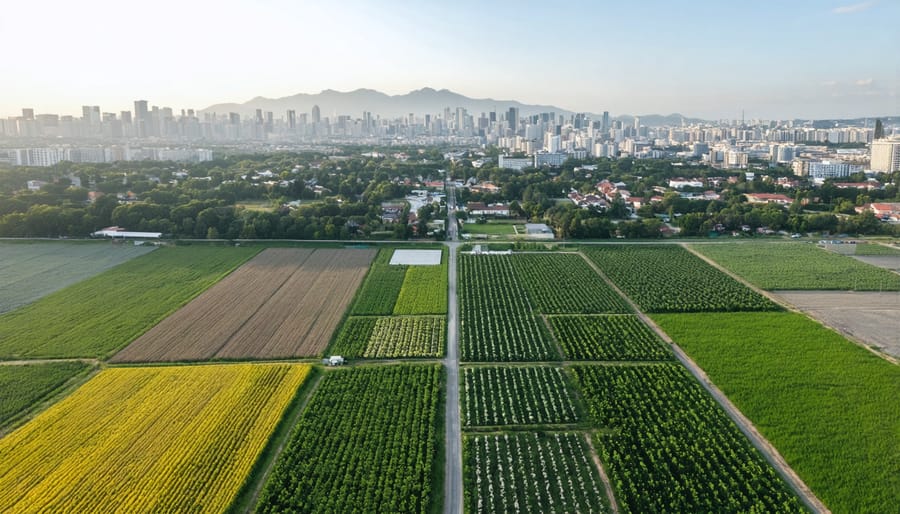
Building Strong Organizational Foundations
Collaborative Leadership Models
In the Alberta farming community, successful organizational development hinges on leadership models that effectively connect rural producers with urban partners. The “Circle of Influence” approach, pioneered by several successful agricultural cooperatives in Central Alberta, demonstrates how shared decision-making can strengthen farm-to-market relationships.
This collaborative model typically involves a core leadership team comprising both farming experts and urban stakeholders, each bringing unique perspectives to the table. For example, the Red Deer Regional Food Partnership showcases how monthly roundtable discussions between farmers, local retailers, and community organizations have led to more efficient distribution networks and improved market access.
Key elements of effective collaborative leadership include:
– Regular face-to-face meetings between rural and urban partners
– Shared goal-setting workshops held quarterly
– Equal representation in decision-making processes
– Clear communication channels using both traditional and digital methods
– Rotation of leadership roles to ensure diverse perspectives
The Leduc County Agricultural Innovation Program demonstrates how this approach works in practice. Their hybrid leadership structure combines traditional farming wisdom with urban market insights, resulting in a 40% increase in direct-to-consumer sales over three years.
To implement such models effectively, organizations should start with small working groups and gradually expand their network based on proven successes. This measured approach helps build trust and ensures sustainable growth while maintaining strong connections between rural producers and urban markets.
Stakeholder Integration Framework
Successful farming organizations thrive on the integration of diverse stakeholders, from rural producers to urban consumers. In Alberta, the process of building thriving organic communities depends on creating inclusive frameworks that bridge geographical and cultural gaps.
A proven approach involves establishing regional working groups that meet quarterly, combining in-person gatherings with virtual participation options. These groups typically include farmers, local food processors, agricultural extension workers, and urban food advocates. The key is ensuring equal representation and voice from both rural and urban perspectives.
The framework operates on three fundamental principles:
1. Regular consultation through structured feedback sessions
2. Shared decision-making processes with rotating leadership roles
3. Clear communication channels using both traditional and digital methods
Many successful Alberta farming organizations have implemented mentorship programs pairing experienced producers with urban entrepreneurs interested in agriculture. This creates valuable knowledge exchange opportunities while building lasting relationships between communities.
To maintain stakeholder engagement, successful organizations often establish annual events that bring together all participants. These might include harvest celebrations, educational workshops, or community markets. Such events help reinforce connections and provide tangible benefits to all stakeholders while fostering a sense of shared purpose and community ownership.
Successful Partnership Models in Action
The Edmonton-Leduc County Initiative
The Edmonton-Leduc County Initiative stands as a shining example of successful urban-rural collaboration in Alberta’s agricultural sector. Launched in 2018, this partnership connects over 40 organic producers from Leduc County with Edmonton’s growing urban market demands, creating a sustainable farm-to-table network that benefits both communities.
At the heart of this initiative is a structured mentorship program where experienced organic farmers guide newcomers through certification processes and sustainable farming practices. The program has resulted in a 35% increase in certified organic production within the region over three years, while establishing reliable distribution channels through Edmonton’s farmers’ markets and local grocery cooperatives.
The initiative’s success stems from its innovative organizational approach, which includes a dedicated coordination team that manages logistics, quality control, and marketing efforts. Local farmers report an average revenue increase of 28% since joining the program, primarily due to guaranteed purchase agreements and premium pricing for organic produce.
Community engagement plays a crucial role, with regular farm tours and seasonal festivals drawing thousands of urban residents to Leduc County farms. These events have helped build consumer trust and understanding of organic farming practices while providing farmers with direct feedback from their customer base.
The initiative also features a shared resources program, where participating farmers pool equipment and storage facilities, reducing individual operational costs by approximately 20%. This collaborative approach has made organic farming more accessible to new entrants and helped establish a resilient local food system that continues to grow and adapt to changing market demands.
Calgary’s Farm-to-Table Network
Calgary’s innovative farm-to-table network has emerged as a leading example of successful urban-rural agricultural integration in Western Canada. The network connects over 40 organic farms within a 100-kilometre radius of Calgary with urban markets, restaurants, and community-supported agriculture programs.
At the heart of this network is the Calgary Regional Agricultural Partnership (CRAP), established in 2018, which facilitates direct relationships between rural producers and urban consumers. The partnership has developed a sophisticated distribution system that includes five regional food hubs, reducing transportation costs for individual farmers by up to 30% while ensuring fresh produce reaches urban customers within 24 hours of harvest.
Local farmer Sarah McKenzie of Sunshine Organic Farm notes, “The network has transformed how we operate. We now have reliable market access and can focus on what we do best – growing quality organic produce.” The system supports over 200 family farms and has created approximately 300 jobs in transportation, processing, and distribution.
The network’s success relies on its collaborative governance model, where farmers, distributors, and urban retailers share decision-making responsibilities. Monthly meetings allow stakeholders to address challenges promptly and adapt to changing market conditions. A digital platform tracks inventory, manages orders, and provides real-time updates on product availability.
Training programs offered through the network help new farmers integrate into the system, while mentorship opportunities connect experienced producers with emerging agricultural entrepreneurs. The initiative has increased local food security, with participating farms reporting an average 40% increase in revenue since joining the network.
This model demonstrates how organizational development in farming can create sustainable, mutually beneficial relationships between urban and rural communities while supporting local organic agriculture.
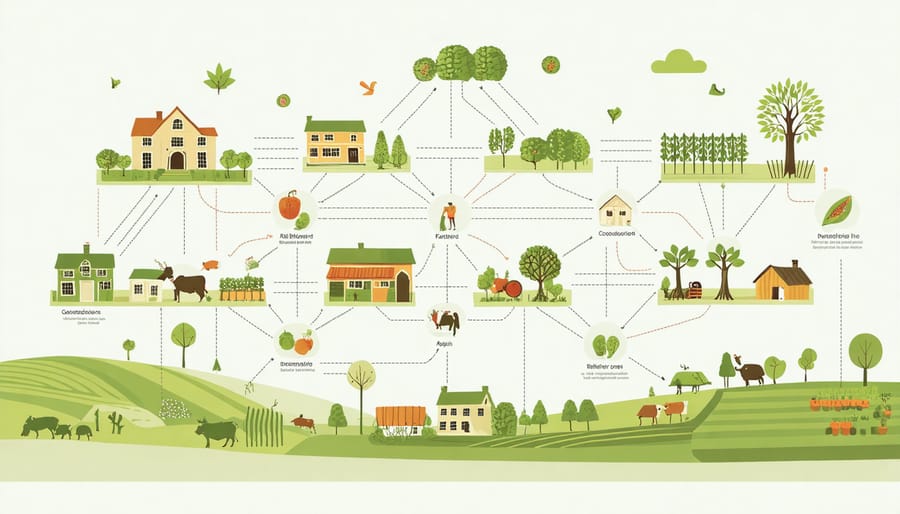
Resource Optimization Through Partnership
Shared Infrastructure Development
In Alberta’s farming communities, shared infrastructure development has emerged as a cornerstone of sustainable agricultural growth. Recent success stories, like the Lacombe County Equipment Share Program, demonstrate how collaborative approaches can benefit multiple farm operations while reducing individual capital investments.
Shared infrastructure projects typically include communal storage facilities, processing centres, and equipment pools. For example, the Mountain View Agricultural Society established a community-owned grain handling facility that serves over 40 local farms, reducing storage costs by approximately 30% per operation. Similarly, the Red Deer Valley Co-operative developed a shared cold storage facility, enabling smaller producers to access premium market opportunities previously out of reach.
These initiatives often extend beyond physical assets. The Olds Institute for Community Development created a digital infrastructure network connecting local farms, enabling real-time information sharing about equipment availability, bulk purchasing opportunities, and transportation coordination. This system has helped participating farms reduce operational costs by an average of 15%.
Successful shared infrastructure projects require careful planning and clear governance structures. The Alberta Agricultural Development Corporation recommends establishing formal agreements that outline usage rights, maintenance responsibilities, and cost-sharing frameworks. Regular meetings and transparent communication channels help ensure equitable access and maintain strong working relationships among participants.
Many of these projects qualify for provincial funding support, with matching grants available through various agricultural development programs. When properly structured, shared infrastructure initiatives can significantly enhance farm efficiency while fostering stronger community bonds.
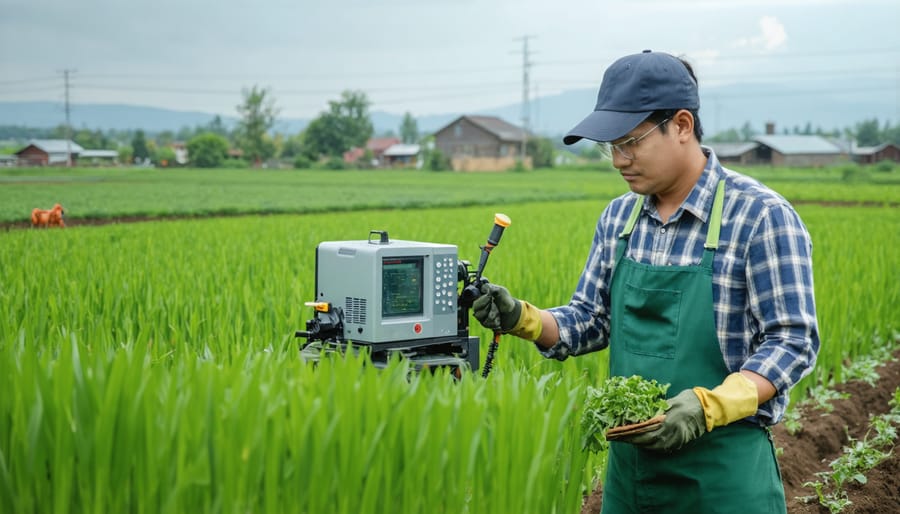
Knowledge and Technology Transfer
Effective information sharing between urban and rural partners is crucial for modern farming success in Alberta. Through smart technology partnerships, farmers are bridging the knowledge gap and creating robust networks that benefit both communities.
Digital platforms have revolutionized how agricultural knowledge flows between urban research centers and rural farming operations. Many Alberta farmers now participate in virtual learning communities, sharing real-time data about crop yields, soil conditions, and weather patterns. These collaborative networks enable quick problem-solving and innovation sharing across vast geographic distances.
The Alberta Farm Knowledge Network (AFKN) exemplifies successful knowledge transfer, connecting over 500 farms with urban agricultural experts through mobile apps and web-based tools. Farmers can access immediate support, participate in online workshops, and contribute to a growing database of regional farming practices.
Regular in-person knowledge exchange events complement digital solutions. Monthly farmer-researcher meetups in regional hubs like Red Deer and Lethbridge provide opportunities for hands-on learning and relationship building. These gatherings help maintain the human element in technology transfer while ensuring that urban innovations remain practical and applicable to rural farming realities.
To maximize knowledge transfer effectiveness, many organizations now employ a hybrid approach, combining traditional field days with digital resources and remote consulting services. This integrated method ensures that valuable farming insights reach those who need them most, regardless of location or technological expertise.
Measuring Partnership Success
Key Performance Indicators
Effective measurement of farming partnerships relies on carefully selected success metrics for organic farming that reflect both economic and social outcomes. Key performance indicators should include:
Yield Performance: Track crop yields per hectare compared to regional averages, monitoring improvements over time. Aim for consistent 15-20% increases within three growing seasons.
Financial Metrics: Measure gross margins per crop, return on investment, and cost savings through shared resources. Set targets for 25% reduction in operational costs through partnerships.
Market Penetration: Monitor the percentage of produce sold through direct-to-consumer channels, targeting 60% or higher for optimal profitability.
Partnership Engagement: Track participation rates in knowledge-sharing events, joint purchasing initiatives, and collaborative projects. Aim for 80% partner involvement in quarterly activities.
Environmental Impact: Measure soil health improvements, water usage efficiency, and biodiversity indicators. Document a minimum 10% annual improvement in soil organic matter content.
Community Integration: Record the number of community events hosted, educational programs delivered, and local employment opportunities created, with a goal of quarterly community engagement activities.
These metrics should be reviewed quarterly and adjusted based on seasonal variations and partnership evolution.
Continuous Improvement Strategies
Success in farming partnerships relies on a commitment to continuous improvement. Regular assessment of operations, open communication channels, and adaptable strategies are essential for long-term sustainability. Establish quarterly review meetings where all stakeholders can share insights, challenges, and innovative solutions.
Create measurable benchmarks for success, such as crop yields, soil health indicators, or community engagement metrics. Document best practices and lessons learned throughout the growing season, maintaining detailed records that can inform future decision-making.
Consider implementing a mentorship program where experienced farmers can guide newer members, fostering knowledge transfer and strengthening community bonds. Encourage participation in local agricultural workshops and seminars to stay current with industry developments and sustainable farming practices.
Regular feedback surveys among partnership members can identify areas for improvement and celebrate successes. Focus on incremental changes rather than dramatic overhauls, allowing time for new practices to take root. Remember that improvement is an ongoing journey – what works well one season may need adjustment in the next.
Build relationships with local agricultural extension services and research institutions to access the latest innovations and support systems available to Alberta farmers.
As we’ve explored throughout this article, the future of organic farming in Alberta lies in strong rural-urban partnerships and organized development frameworks. The success stories from regions like Leduc County and Red Deer demonstrate that when urban consumers and rural producers work together, both communities thrive. These partnerships have shown increases in local food security, economic stability, and environmental sustainability.
Looking ahead, the growing demand for organic products presents unprecedented opportunities for Alberta farmers. Market research indicates a projected 15% annual growth in organic food consumption across Canada over the next five years. This trend, coupled with emerging technologies and sustainable farming practices, positions our agricultural community for continued success.
Key to this success will be maintaining focus on transparent communication channels, shared resource management, and collaborative decision-making processes. The establishment of farmer-led cooperatives and community-supported agriculture programs has proven particularly effective in bridging the rural-urban divide.
For farmers considering this path, remember that organizational development is an ongoing journey. Start with small, manageable steps, leverage existing community networks, and don’t hesitate to seek guidance from agricultural extension services and experienced peers. The future of farming in Alberta depends on our ability to adapt, collaborate, and grow together as a unified agricultural community.
As we continue to strengthen these partnerships, we’re not just building sustainable farms – we’re cultivating resilient communities that will feed generations to come.


